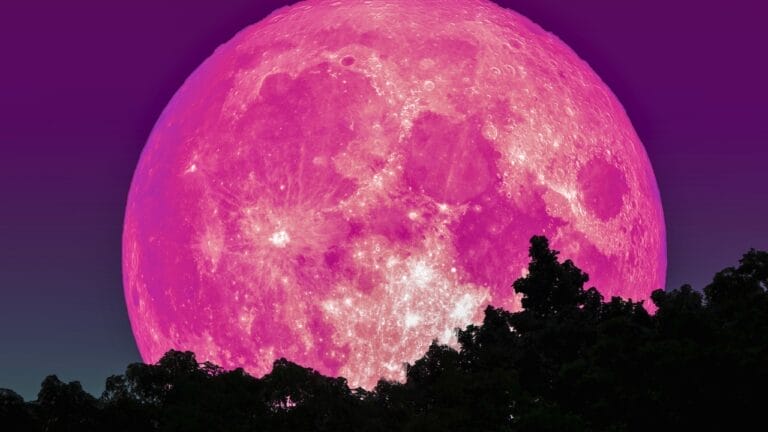Tonight, the sky will be graced by the Pink Moon, though it may not be the color you expect. This lunar event isn’t actually pink, but it’s steeped in fascinating history and significance that illuminate our understanding of the natural world.
Beyond its name lies a realm of rich symbolism and seasonal markers. Here’s eight intriguing facts about the Pink Moon that will change the way you view this captivating springtime phenomenon.
1. The Pink Moon is Named After a Flower
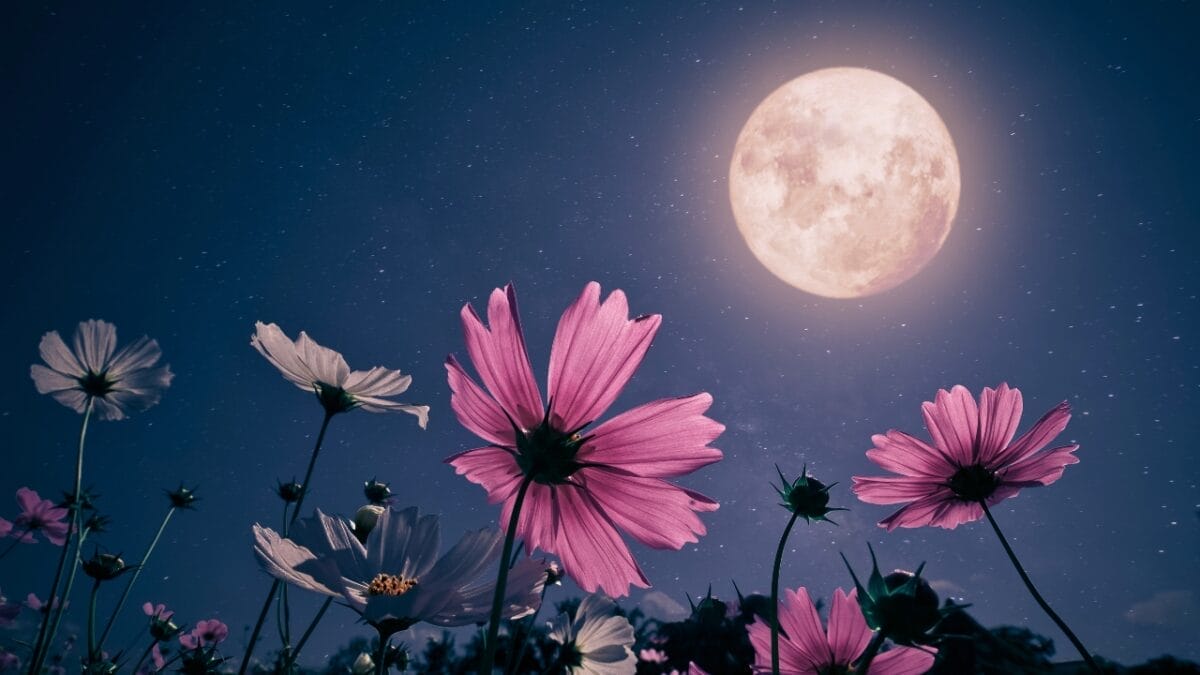
Contrary to what you might think, the Pink Moon doesn’t actually appear pink in the sky. Instead, it gets its name from the pink phlox flowers that bloom in early spring across North America. These delicate blossoms are one of the first signs that winter is finally over and warmer days are on the horizon.
Native Americans and early settlers often used the blooming of certain flowers to track the changing of the seasons. So when the pink phlox began to appear, they knew it was time to start preparing for the spring planting season ahead.
2. It Marks the Beginning of Spring
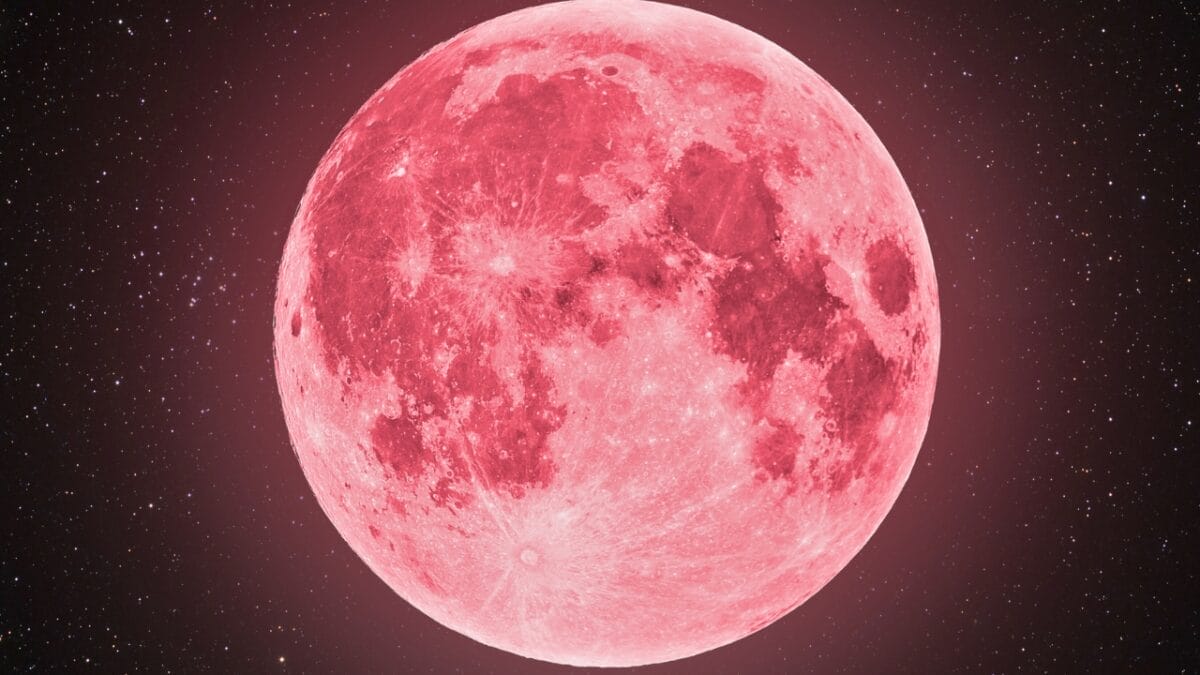
Speaking of spring, did you know that the Pink Moon is the first full moon of the season? In 2024, it will reach peak illumination on April 23rd at 7:49 pm EDT. For many cultures around the world, the arrival of the Pink Moon signifies a time of rebirth, renewal, and new beginnings after the long, cold winter.
In fact, the Pink Moon is often associated with themes of growth, abundance, and fertility. It’s a reminder that even after the darkest of times, there is always the promise of brighter days ahead.
3. The Pink Moon Goes By Many Other Names
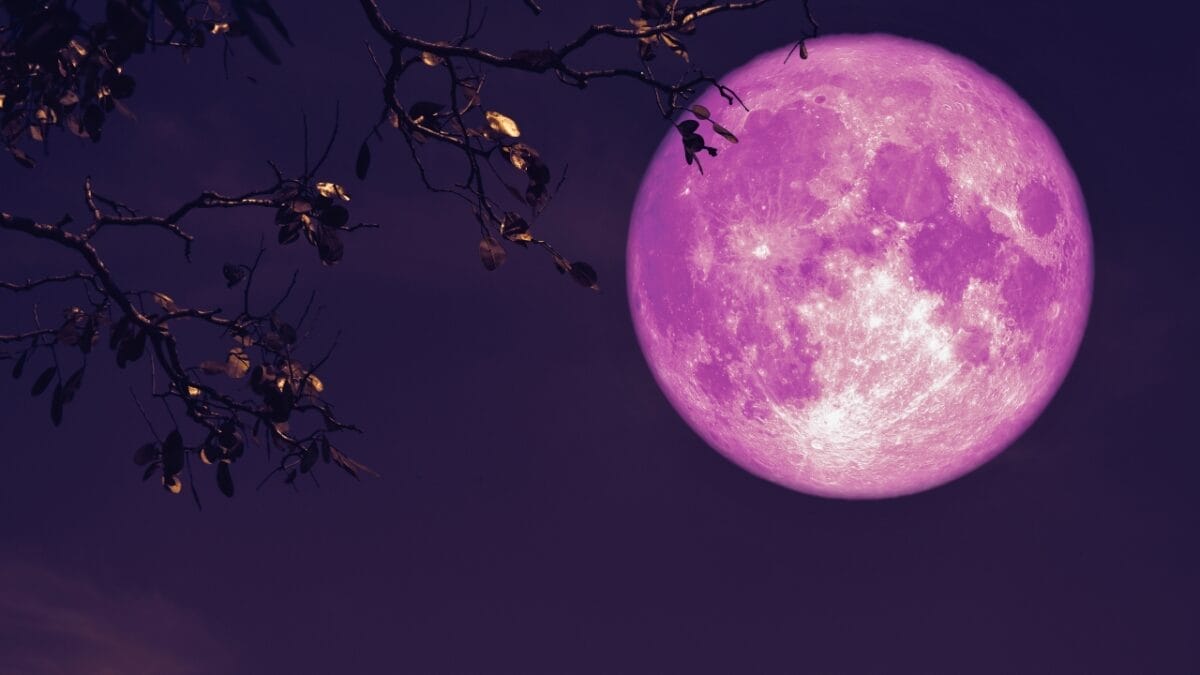
While the Pink Moon is certainly a catchy name, it’s not the only one this full moon goes by. Depending on the culture and region, you might also hear it referred to as the Sprouting Grass Moon, Egg Moon, or Fish Moon.
Each of these names is tied to the seasonal changes and activities that typically occur during this time of year. For example, the Sprouting Grass Moon refers to the fresh green shoots that begin to appear in fields and gardens, while the Egg Moon is associated with the abundance of eggs laid by wild birds in the spring.
4. The Pink Moon is Tied to Easter

Did you know that the date of Easter is determined by the Pink Moon? Specifically, Easter falls on the first Sunday after the full moon that occurs on or after the spring equinox. This full moon is also known as the Paschal Moon in Christian tradition.
The reason for this timing has to do with the lunar calendar used by the early Christian church. By tying the date of Easter to the full moon, they ensured that the holiday would always fall around the same time each year, while still being connected to the natural rhythms of the seasons.
5. It Can Appear Different Colors
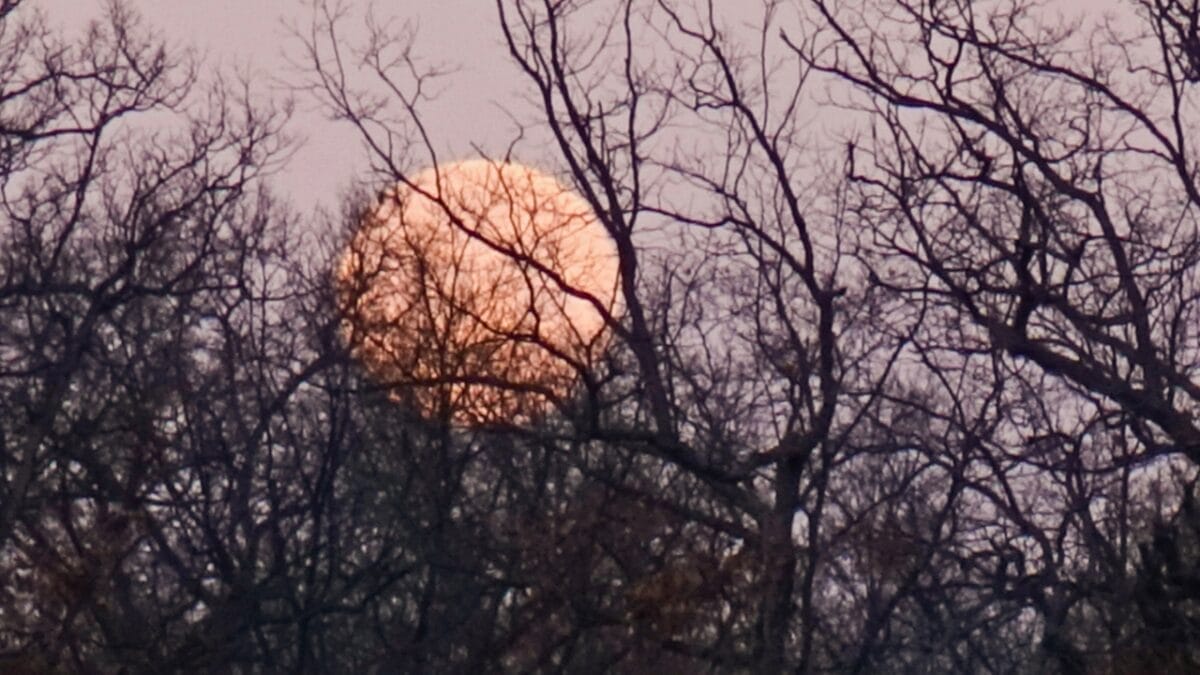
While the Pink Moon doesn’t actually appear pink in the sky, it can sometimes take on a pinkish or orange hue when it’s low on the horizon. This is due to a phenomenon called Rayleigh scattering, which occurs when light from the moon has to pass through more of Earth’s atmosphere to reach our eyes.
During this process, the shorter blue wavelengths of light are scattered more strongly than the longer red and orange wavelengths. As a result, the moon can appear to take on a warmer, more colorful appearance, especially during the early evening or early morning hours.
6. The Pink Moon is a Powerful Time for Spiritual Practice

For many people, the Pink Moon is a time of great spiritual significance. It’s believed to be a powerful time for setting intentions, releasing what no longer serves you, and connecting with the natural world around you.
Some common spiritual practices associated with the Pink Moon include charging crystals under its light, making moon water (water that has been infused with the moon’s energy), and performing full moon rituals or meditations. Whether you’re a seasoned practitioner or just curious about exploring your spiritual side, the Pink Moon offers a potent opportunity to tap into the cycles of nature and your own inner wisdom.
7. It Has Different Meanings in the Southern Hemisphere
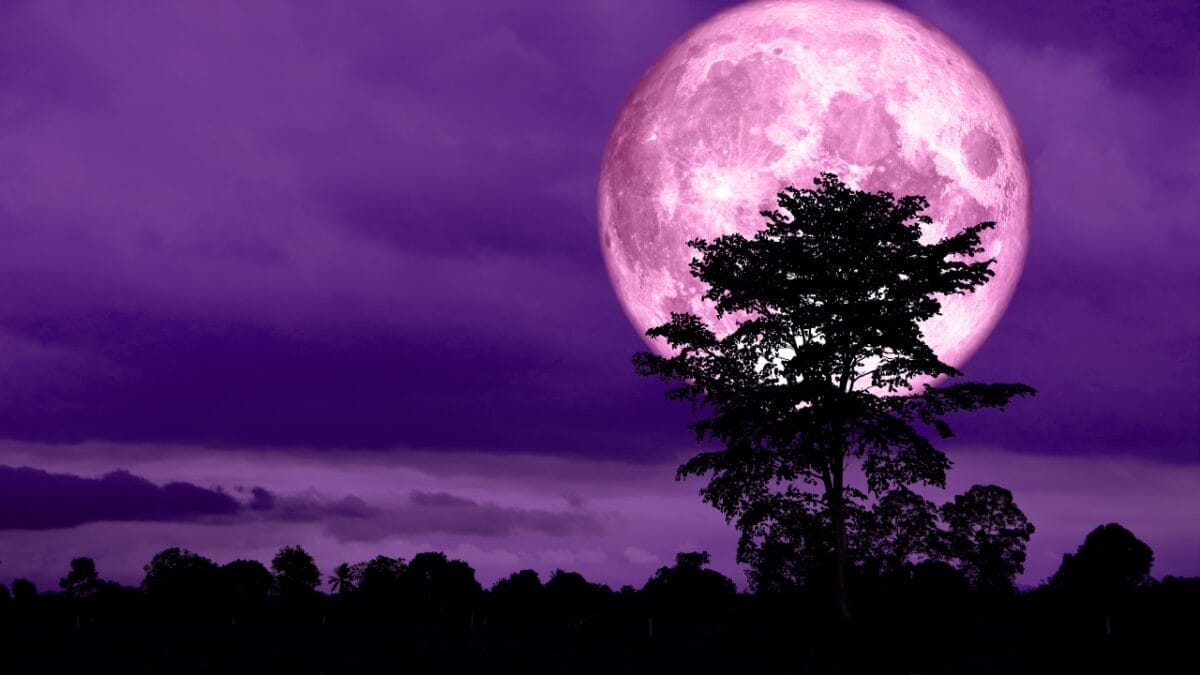
While the Pink Moon is associated with the beginning of spring in the Northern Hemisphere, it holds a different meaning for those living in the Southern Hemisphere. There, the Pink Moon is actually the first full moon of autumn, signaling the start of the harvest season and the gradual descent into winter.
Despite the differences in timing and seasonal associations, the Pink Moon still carries themes of change, letting go, and transformation for those in the southern half of the globe. It’s a reminder that the cycles of nature are always in flux, and that embracing change is an essential part of growth and renewal.
8. The Pink Moon is Just One of Many Named Moons
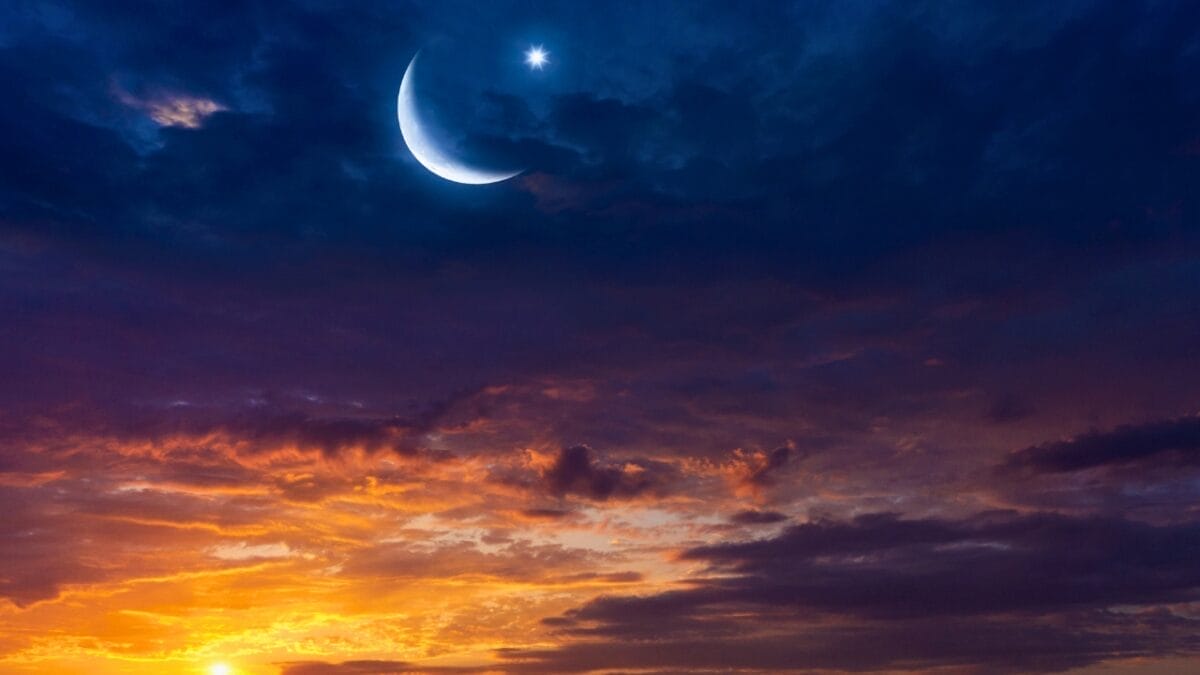
While the Pink Moon is certainly a special and significant event, it’s just one of many named moons throughout the year. Each full moon has its own unique name and associations, often tied to the seasonal changes and natural phenomena that occur during that time.
For example, the full moon in June is known as the Strawberry Moon, named for the ripe strawberries that begin to appear in early summer. The full moon in September is called the Harvest Moon, as it traditionally provided extra light for farmers to work late into the night bringing in their crops.
By learning about and connecting with these named moons, we can deepen our appreciation for the natural world and the cyclical rhythms that shape our lives. Whether you’re a fan of the Pink Moon or any of the other full moons throughout the year, there’s always something new and fascinating to discover.
Davin is a jack-of-all-trades but has professional training and experience in various home and garden subjects. He leans on other experts when needed and edits and fact-checks all articles.
